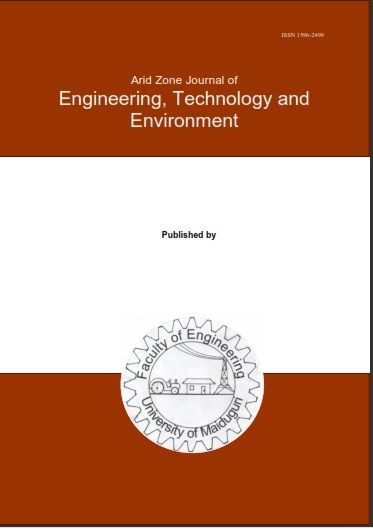Abstract
Automobile workshops house the auto-mechanic, auto-electrical, painting, and panel-beating units. Activities carried out in these units expose the workers to some occupational hazards and some musculoskeletal risk factors with perceived consequences on their health. Therefore, this study assessed selected automobile workshops within southwestern Nigeria to establish the prevalence of ergonomic hazards. A sample size of 496 auto-repair workshops (auto-mechanic, auto electrical, painting, and panel-beating units) was randomly considered. Data was collected using observation, interaction, and structured questionnaires. The structured questionnaires were administered to the respondents to seek their demography and occupational hazards information. Standard weighing scale and stadiometer were used to collect the weights and status of the respondents, respectively. Some of the common hazards identified in the auto-repair workshops are poor workstation design, poor equipment and tool layout, noise, wet floors, poor lighting, and an unguarded working area, which often lead to slips, trips, and falls, muscle strains, equipment accidents, overexertion injuries, and scald injuries, among others. Common occupational risk factors in different workstations across the workshops visited were identified and ranked to establish their prevalence as non-usage of personal protective equipment, PPE, awkward posture, repetitive motion, repetitive manual tasks, and exposure to sharp objects. However, panel beaters (55%) and auto-mechanic technicians (49%) have the highest percentage of people who are normal weight, while painters (62%) and auto-electricians (38.5%) have the highest percentage of people who are above normal weight. Quick Exposure Check, QEC results showed that lower back pain and neck pain are the most prevalent musculoskeletal disorders (MSDs) and are majorly caused by awkward posture at work in an auto-repair workshop. According to this study, vehicle repair professionals were exposed to a variety of risks and hazards, with the lower backs of the workers being the most severely impacted. Auto-mechanical technicians in auto-repair workshops are most at risk.

This work is licensed under a Creative Commons Attribution-NonCommercial-NoDerivatives 4.0 International License.
Copyright (c) 2025 ARID ZONE JOURNAL OF ENGINEERING, TECHNOLOGY AND ENVIRONMENT

